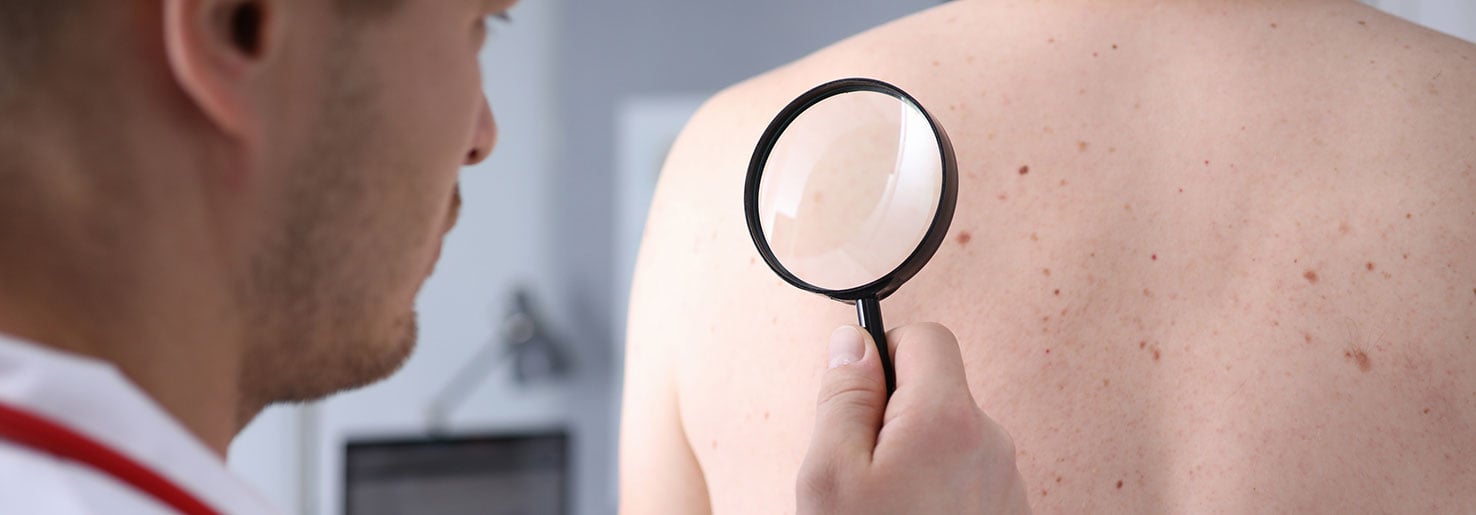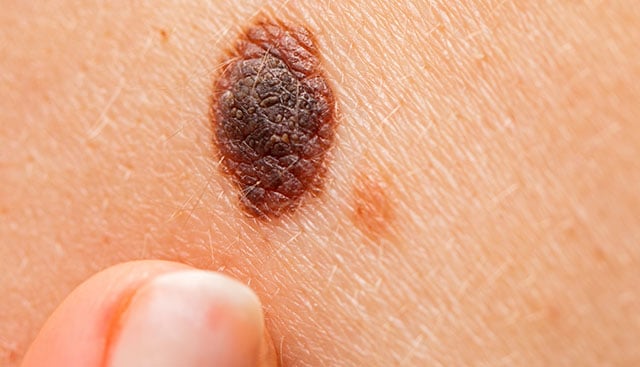
What Is an Atypical Mole?
Sometimes referred to as an “ugly duckling,” an atypical mole is any mole that looks suspiciously different than the others. This is an important red flag because the most prominent warning sign of melanoma—the most serious and aggressive form of skin cancer—is a skin lesion that resembles an atypical mole.
Moles are small clusters of melanocytes, which are the pigment-producing cells that give the skin its color. All typical (common) moles on the body tend to resemble each other. Most people have at least a few of these brownish skin spots, which are usually round and smaller than the width of a pencil eraser. Some moles are present at birth or develop within the first few decades of life, while others appear after sun exposure. Recognizing an atypical mole
 To help people understand the difference between a common mole and an atypical mole, many experts suggest the easy-to-remember acronym “ABCDE,” which stands for the key characteristics of an atypical mole:
To help people understand the difference between a common mole and an atypical mole, many experts suggest the easy-to-remember acronym “ABCDE,” which stands for the key characteristics of an atypical mole:
- Asymmetry – Unlike common moles, which tend to be evenly proportioned, atypical moles are often asymmetrical. In other words, a line drawn through the middle of the mole would not create two matching halves.
- Borders – While common moles typically have distinct borders, atypical moles tend to have “hazy” or irregular borders. Instead of forming a sharply defined outline, the edges of the mole may appear to gradually fade into the surrounding skin.
- Color – Common moles are uniform in color and may be brown, tan or pink. In contrast, atypical moles are irregular in color and may include several shades of black, brown, blue or red.
- Diameter – Most atypical moles measure at least .25 inches in diameter and are larger than a pencil eraser.
- Evolution – Noticeable changes in a previously stable mole or the appearance of a new mole after age 40 warrant evaluation by a physician.
Is an atypical mole always cancerous?
Atypical moles are not skin cancer or otherwise harmful in any way. Some atypical moles—as well as some common moles—can undergo abnormal cellular changes that damage their DNA and cause them to grow rapidly and transform into melanoma. However, most do not. Melanoma is more likely to develop as a new, unusual skin spot that is unrelated to a mole.
In many cases, melanoma appears as an asymmetrical, irregularly bordered, multicolored skin spot that continues to increase in size over time. These skin changes occur as the cancerous cells divide and form a disorganized cluster that resembles an atypical mole. Other features to watch for include itching, pain, bleeding, crusting, oozing and swelling. If a skin spot has any of these characteristics, it is important to seek medical attention. A physician can perform an examination using a special handheld magnifying device (dermatoscope), which will allow them to visualize skin characteristics that cannot be seen with the naked eye.
Should an atypical mole be removed?
As compared to common moles, atypical moles are more likely to transform into melanoma. However, the vast majority of moles—both atypical and common—never become cancerous. Because most melanomas develop in normal skin and are unrelated to moles, having moles removed will not prevent melanoma.
The most important step of an effective skin cancer prevention strategy is to promptly discuss any unusual skin changes with a physician. After performing an examination, the physician may recommend removing all or part of a suspicious mole for further analysis in a lab.
The Moffitt Cancer Center difference
The experts in the Cutaneous Oncology Program at Moffitt encourage everyone to perform thorough monthly self-examinations of their skin. To help ensure early detection, it is essential to become familiar with the location, look and feel of any moles, birthmarks, blemishes and other skin spots. The best way to accomplish this is to use both a full-length mirror and a handheld mirror to examine the entire body from head to toe, including areas that are rarely or never exposed to the sun, including the scalp, armpits, nails, genitals, the bottoms of the feet and the skin between the fingers and toes.
If you have been diagnosed with skin cancer or are seeking a second opinion, you can request an appointment with a specialist in our Cutaneous Oncology Program. To do so, call Moffitt at 1-888-663-3488 or complete our new patient registration form online. We do not require referrals.
